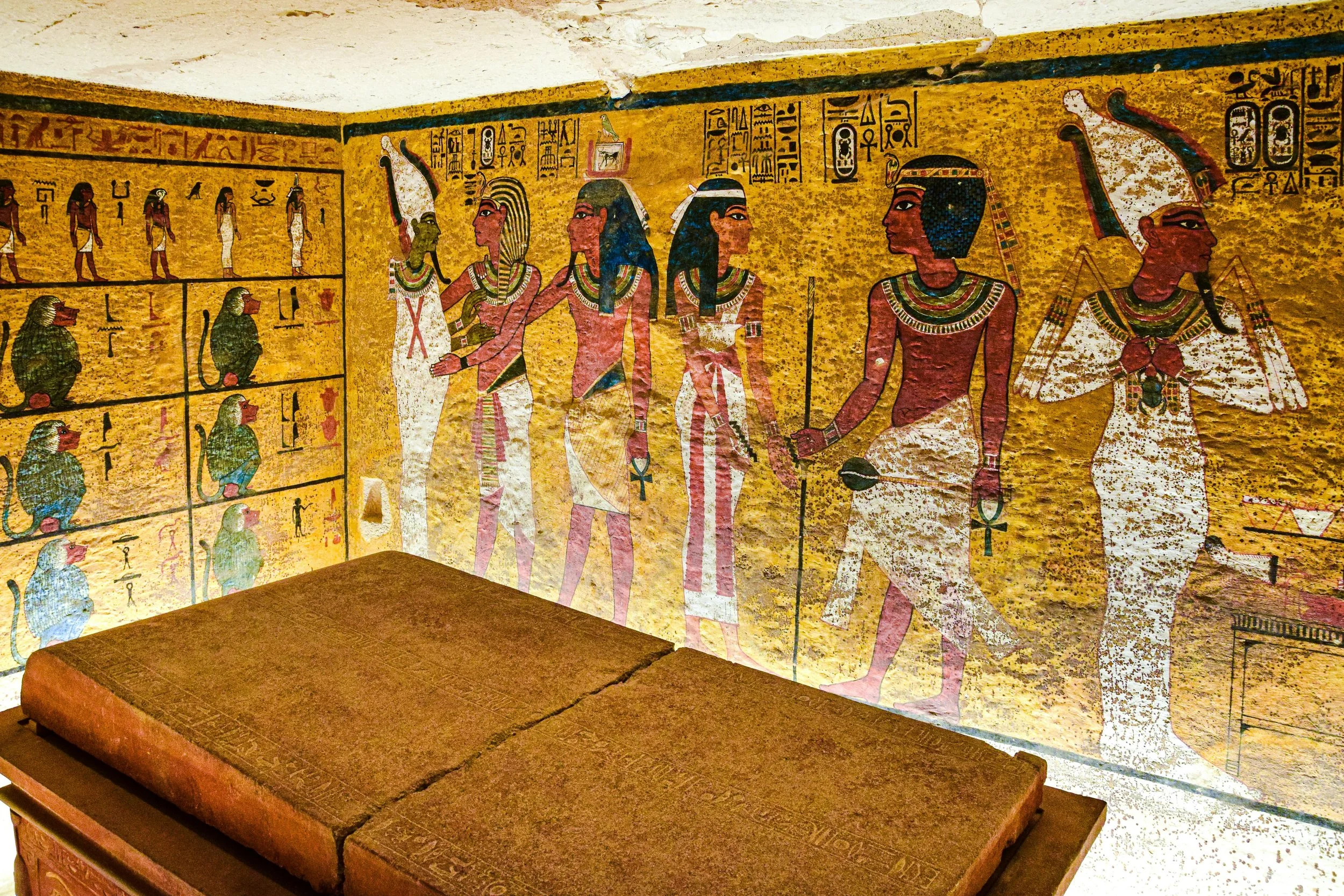The Tomb of Tutankhamun
The Boy King’s Eternal Chamber
Tutankhamun’s story is one of brevity and mystery. He ascended the throne as a child in the 14th century BCE, ruling Egypt for less than a decade before dying at just nineteen. His reign was short, his accomplishments modest, yet his name would one day eclipse them all.
When Tutankhamun died, his burial was hurried. Unlike the vast, elaborate tombs of other pharaohs in the Valley of the Kings, his was small — four modest chambers cut into the rock. Scholars believe it may have been intended for a nobleman, adapted at the last moment for the young king.
Yet it was this very modesty that preserved it. Hidden in the valley floor, overshadowed by larger works, the tomb escaped the waves of looting that emptied most royal burials in antiquity. For over three thousand years, it lay sealed and forgotten, its treasures untouched, its walls silent.
Tutankhamun’s afterlife began not with grandeur, but with secrecy. And that secrecy would one day make him immortal.
Experience It
For centuries, Tutankhamun was almost forgotten. His name was absent from many king lists, his reign overshadowed by the great builders who followed him. But in 1922, his obscurity ended forever.
British archaeologist Howard Carter, backed by Lord Carnarvon, had searched the Valley of the Kings for years, convinced a royal tomb still lay hidden. After seasons of disappointment, his workers uncovered a set of steps cut into the bedrock. They led to a sealed doorway stamped with the royal cartouche of Tutankhamun.
When Carter peered inside by candlelight, he glimpsed a vision the world had not seen for millennia. Gold and ebony, alabaster and ivory, treasures piled from floor to ceiling. Asked if he could see anything, he gave the most famous reply in the history of archaeology:
“Yes, wonderful things.”
Inside lay more than five thousand objects: gilded shrines, chariots, weapons, thrones, jewelry, and statues of the gods. At the heart of it all, nested inside layers of coffins, was the pharaoh himself — his face covered by the now-iconic golden funerary mask.
The discovery electrified the world. Newspapers splashed photographs of the treasures across their pages. Crowds flocked to exhibitions. Egyptomania swept Europe and America, influencing art, fashion, and design. Tutankhamun, the forgotten boy king, became a symbol of eternal Egypt.
What set his tomb apart was not its size, but its survival. It was the only royal burial in the Valley found largely intact — a time capsule of pharaonic wealth and belief, sealed in silence for over three thousand years.
Experience it
A century after its discovery, Tutankhamun’s tomb remains the most valued in the Valley of the Kings. Yet what strikes visitors is not grandeur, but intimacy.
The tomb is small — just four chambers carved into the rock — and its decoration is modest compared to the sprawling, star-covered halls of Seti I or Ramses VI. The walls of the burial chamber are painted a deep golden yellow, showing scenes of the boy king’s funeral rites and his passage into the afterlife.
And yet, the impact is profound. In this confined space, history feels close, almost tangible.
Tutankhamun himself still lies here. His mummified remains rest in a climate-controlled glass case, his delicate features visible just as Howard Carter first saw them in 1925. Around him, the chamber whispers of the treasures once stored here — the shrines, statues, and coffins now housed in Cairo’s museums, awaiting their new home in the Grand Egyptian Museum.
To stand inside is to feel the contrast: a young king whose reign was brief, whose tomb was hurried, yet whose afterlife became the most enduring of all. Tutankhamun’s resting place is not the largest, nor the most lavish. But it is the only one that survived with its story complete.
With us, your visit to Tutankhamun’s Tomb is more than sightseeing. It is an intimate journey into the boy king’s eternal sanctuary — a space unique in all of human history.
Here, the story of Egypt’s boy Pharao lives forever.



